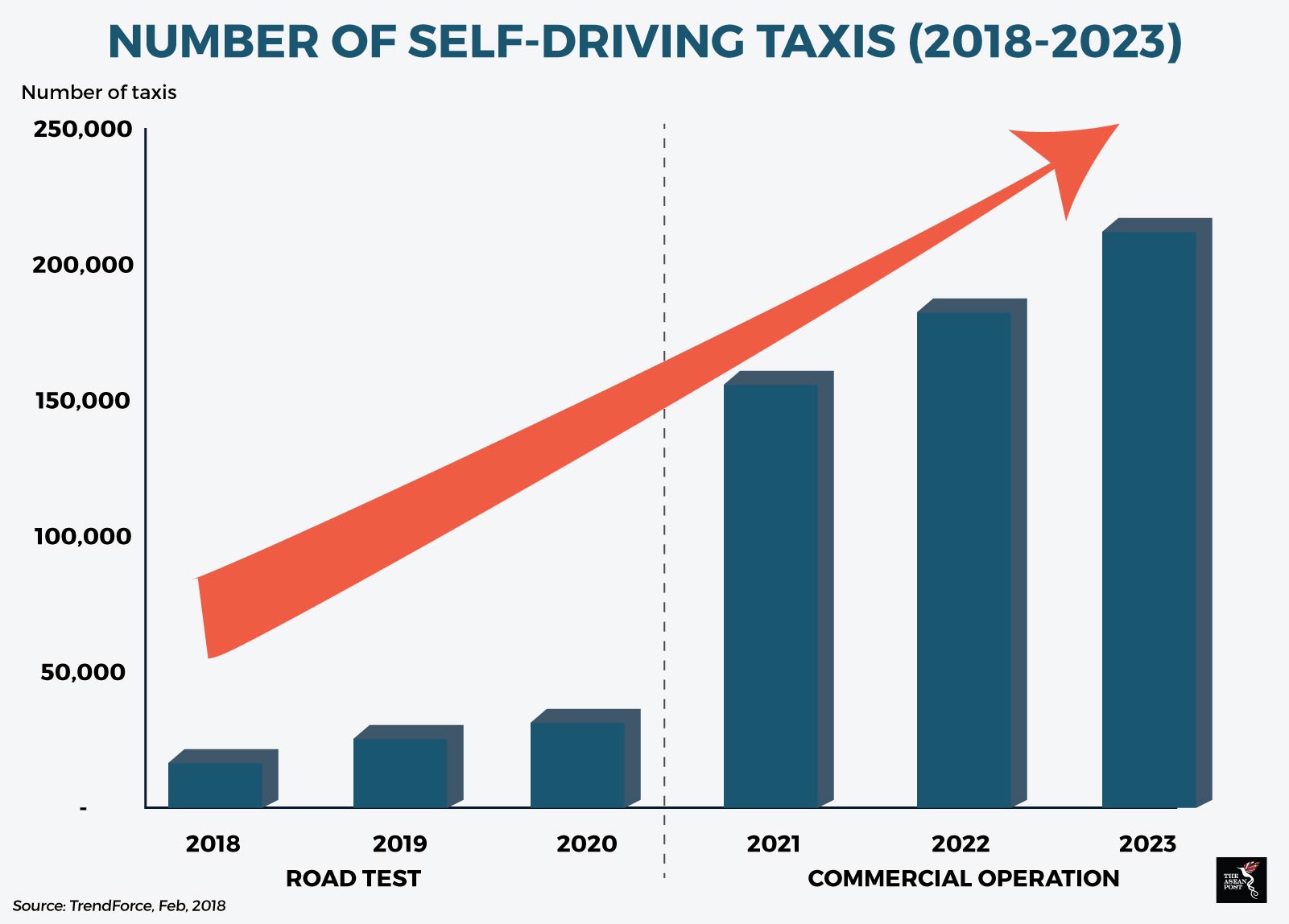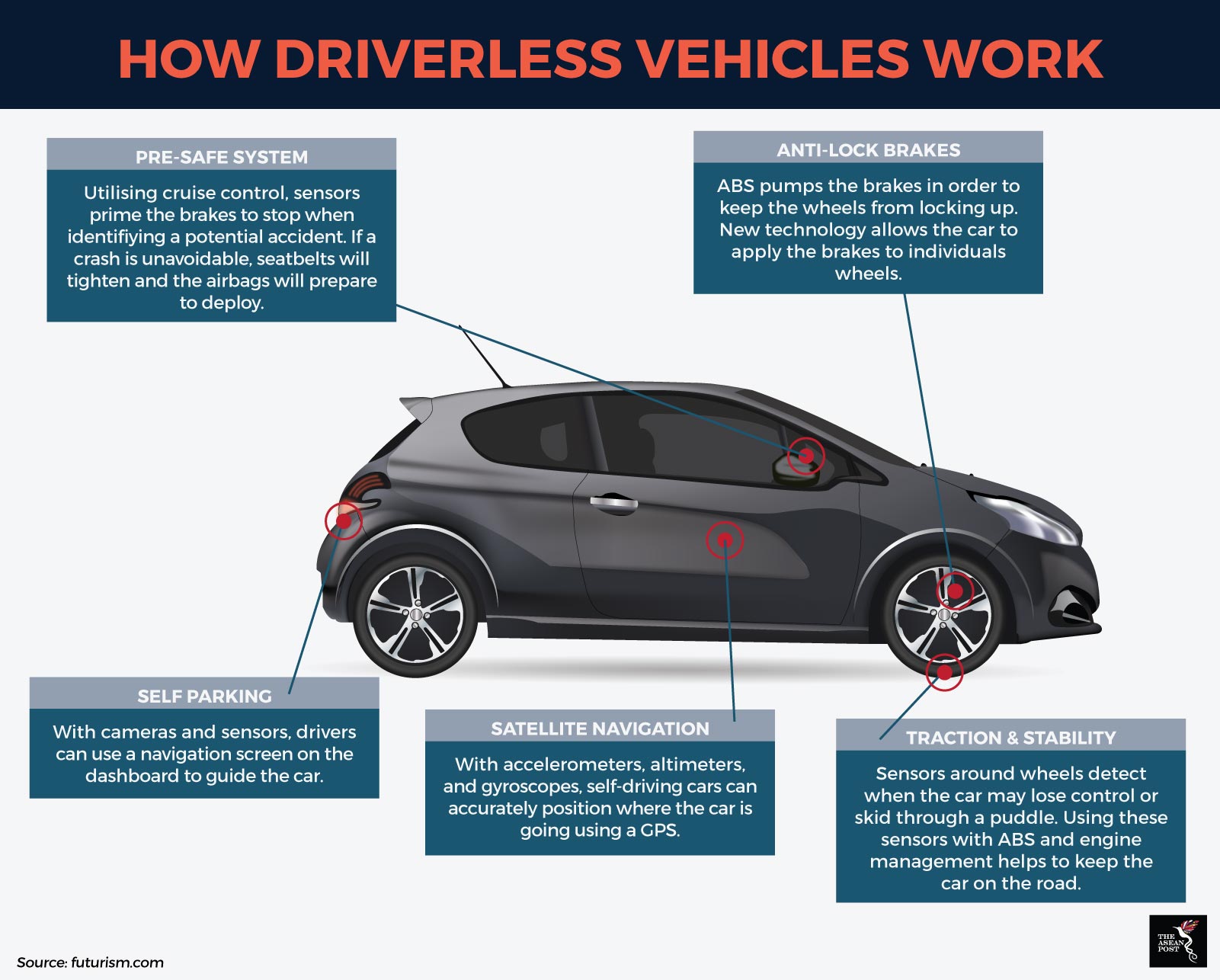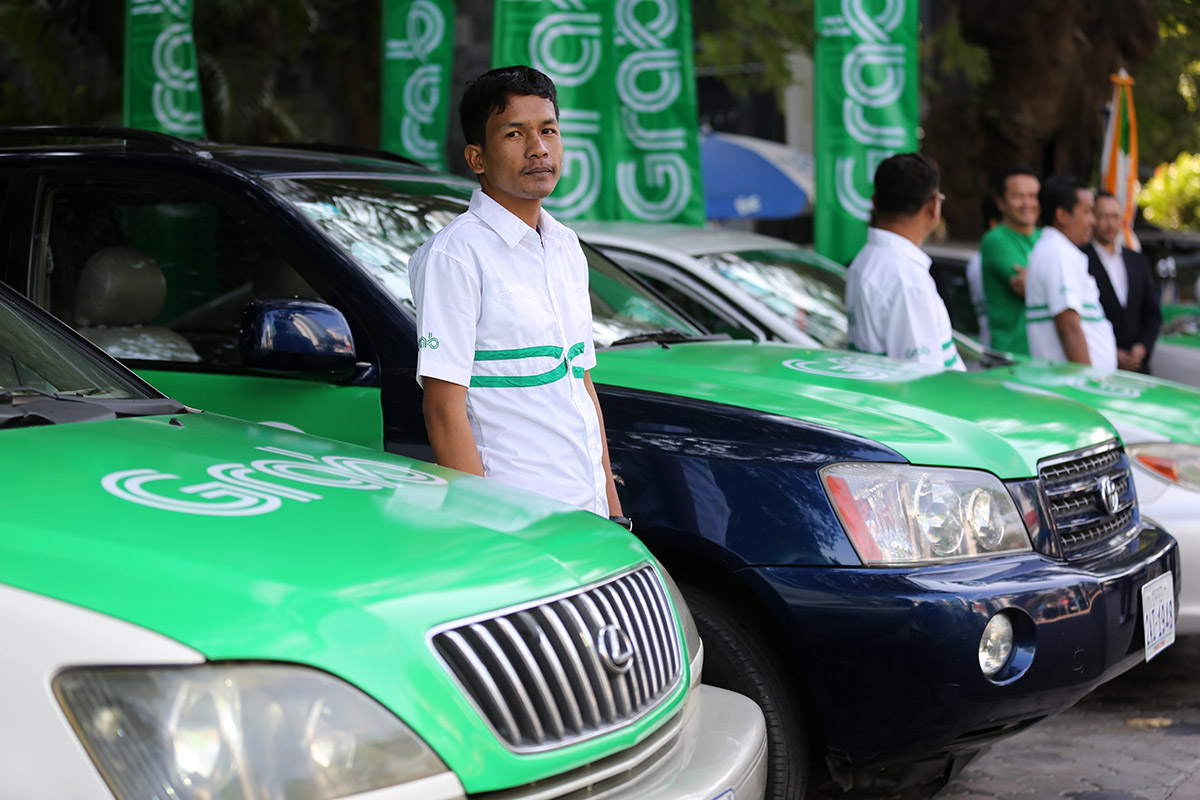Public transportation in the region will see a drastic change over the next few years. According to TrendForce, a global provider of market intelligence on technology industries, it is estimated that the global Compound Annual Growth Rate (CAGR) of self-driving taxis will reach 81% from 2018 to 2023, which means that self-driving taxis is projected to become a reality.
Southeast Asia’s leading ride-hailing company, Grab also announced plans to launch self-driving taxis in the region before 2022. Grab’s president, Ming Maa, said the company wanted to commercialise its robo-taxi operations and that the project would be unveiled within the next four years, reported Nikkei Asian Review.

Hyundai Motor Company, is wagering against individuals owning automated cars and preparing for a future in which the biggest buyers of automated cars will be ride-sharing giants such as Uber, Lyft and Grab.
In January 2018, Hyundai announced that it has invested in Singapore-based Grab. Woonjoon Jang, Director of Hyundai’s Advanced Driver Assistance System Development Group, told Bloomberg in an interview on 8 February 2018 that, “The trend is now changing…in the past, people liked to own their cars. In the near future, I think owners of the self-driving market will be mobility-service providers.”
Singapore paves the way
In Southeast Asia, Singapore is the first country to complete a series of public road tests using driverless taxis, which have been carried out since August 2016. Apart from taxis, Singapore’s Land Transport Authority (LTA) disclosed that it had signed a partnership agreement with ST Kinetics, the special vehicles arm of ST Engineering, to develop and integrate AV technologies into two 40-seater, 12-metre electric buses for use in highly scheduled services.
“To navigate autonomously, the buses will use a satellite-based global positioning system and a suite of sensors to scan and determine their location and immediate surroundings,” the authority says. Other features of the bus that is set to be launched in 2022 include radars to detect surrounding vehicles and pedestrians up to 200 meters ahead.
Driverless vehicles, especially for the use of public transportation will help the public in numerous ways. For instance, senior citizens or those with disabilities will be able to benefit from it mostly. As Singapore aims to be a truly smart city, autonomous public transportation is in line with its futuristic ambitions.
Other countries in the region, however, have not yet explored the possibilities of autonomous public transportation. In cities with heavy traffic such as Jakarta, driverless taxis could reduce the number of accidents and increase traffic efficiency.

Potential implications
According to TrendForce analyst Yvette Lin, fully autonomous vehicles are the ultimate goal of autonomous driving technology. For ridesharing operators, fully autonomous vehicles will significantly increase both, car utilisation rates and transport efficiency, as they can operate 24/7 theoretically.
“However, there is still a long way to go before regulations for fully autonomous vehicles are widely adopted, so both traditional automakers and other technology companies all expect putting self-driving vehicles into commercial operation in 2020 as the year that high automation vehicles will officially become commercialized,” TrendForce reported.
As for regulations regarding autonomous vehicles in the Lion City, it is still in its early stages. In February 2017, Singapore's Parliament amended the Road Traffic Act (RTA), which, outlined a regulatory framework for the trials and use of autonomous vehicles in Singapore.
Some implications that must also be considered in the pipeline of frameworks across the region include accident liability and consumer protection regimes. As vehicles become autonomous, the fault for accidents will arguably shift from the driver to the manufacturer. This, in return, will require regulations to amend definitions of ‘driver’ and perhaps, impose various limitations on the autonomous system. For example, suitable monitoring systems should be considered in order to keep track of unwanted incidents between vehicles and passengers.
Situations like this will further complicate matters between consumers and regulators, and countries which adopt autonomous vehicle systems must be prepared to adapt. Apart from government legislation, manufacturers will also need to adopt high standards of vehicle safety and put in place sturdy systems including protection against cyberattack susceptibilities.
Only with these considerations and amendments in place, will respective governments be able to achieve successful deployment of this technology. After which, it will only be a matter of time before the utilisation of driverless vehicles becomes a reality.
Recommended stories:
